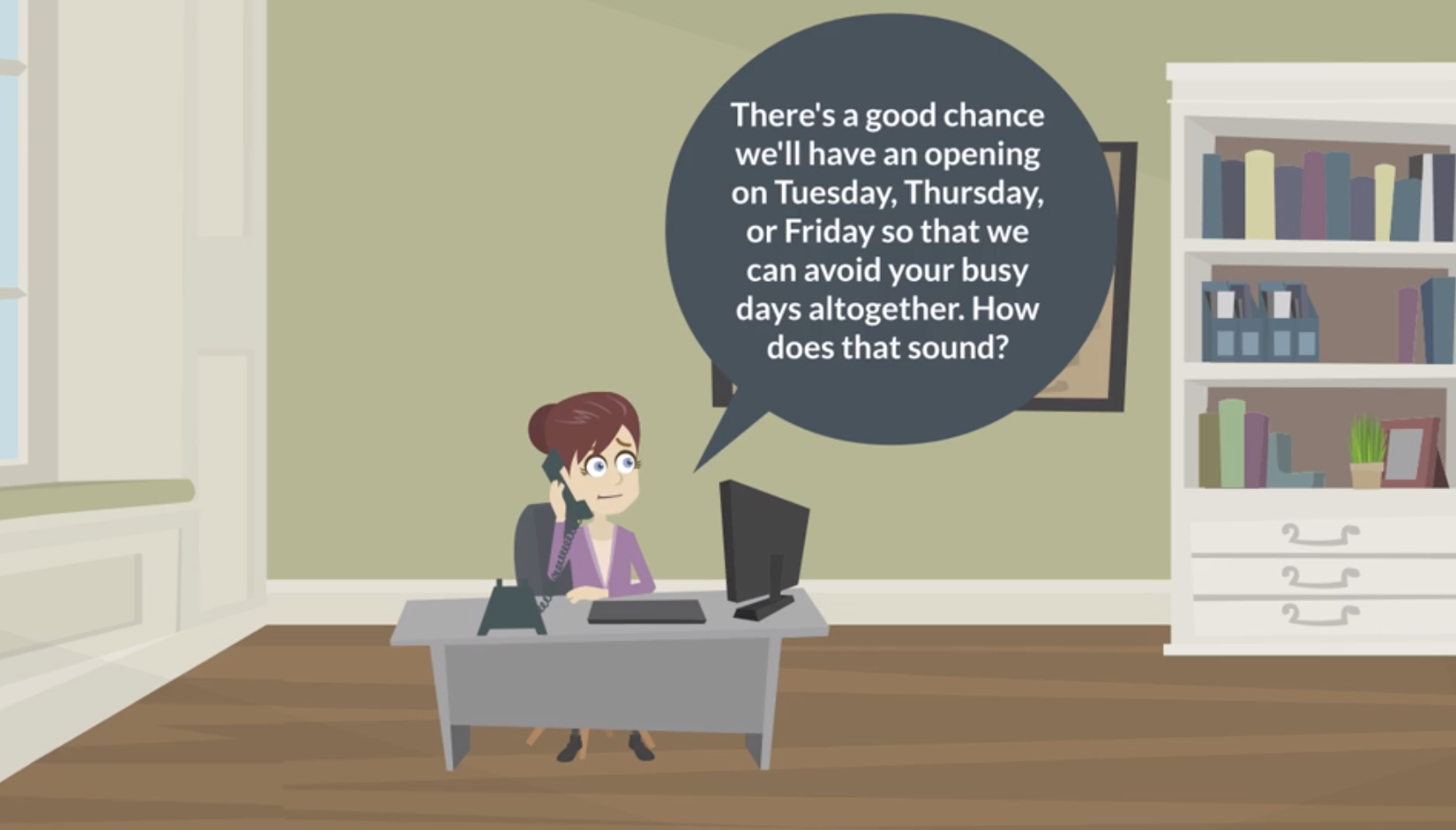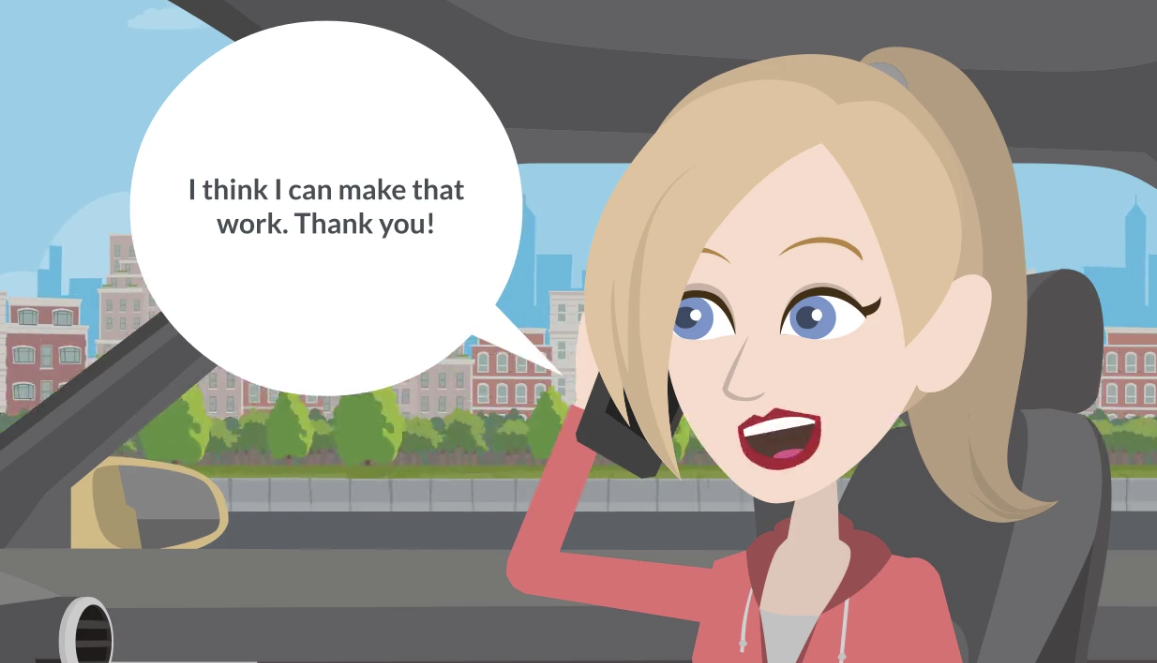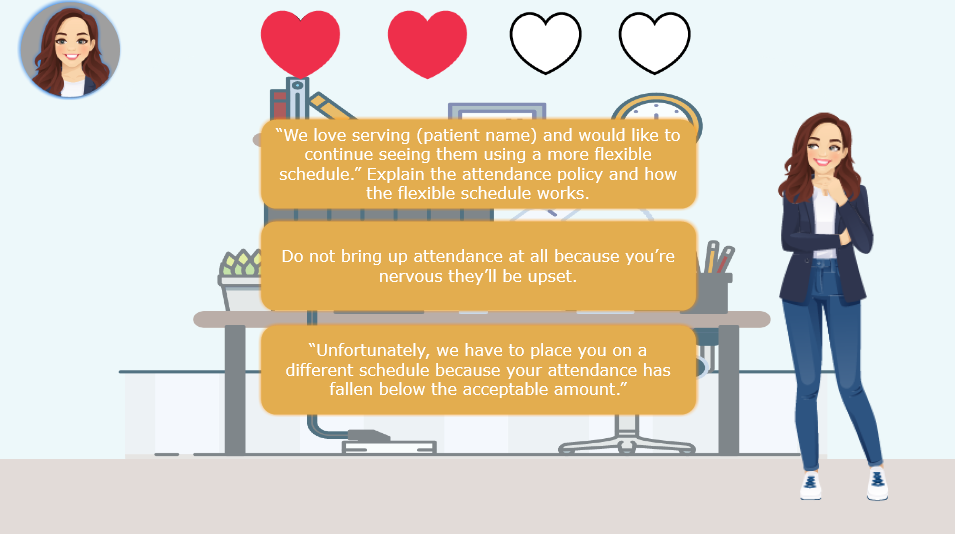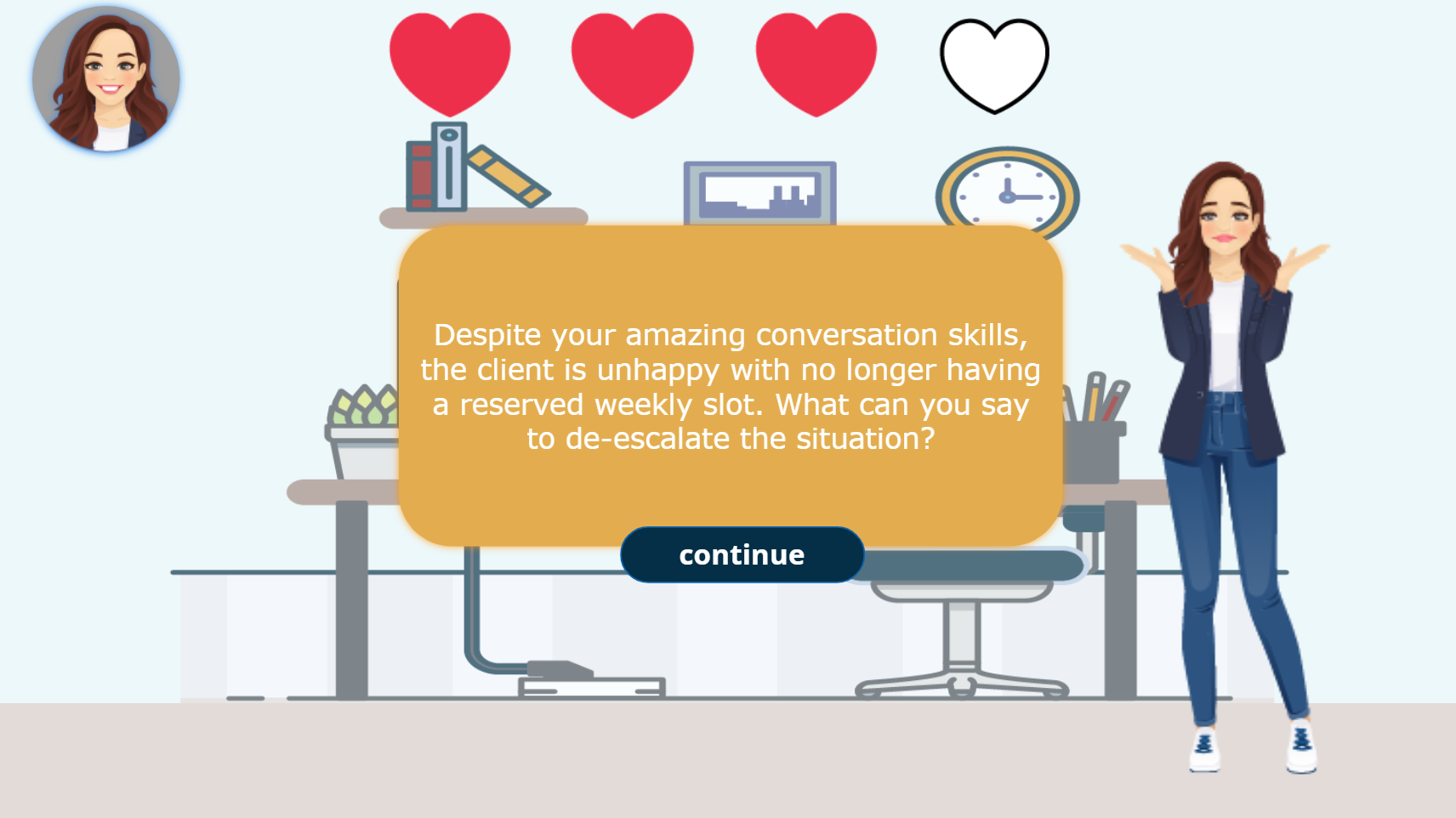Problem and Solution
Bringing up policy with customers is tricky and doesn’t always go as planned. At Columbia Pediatric Therapy, a clinic offering speech and occupational therapy for both kids and adults, the conversation around the attendance policy was a consistent pain point for the owner and staff. After assessing the problem, I suggested a story-based training that would allow them to practice the conversation around the attendance policy in a positive and safe environment.
My Process
Using the ADDIE model to guide my process, I first learned about the audience and problem, which included a handful of interviews with subject matter experts. After creating an action map with one of the team members, I began the design process which included drafting a storyboard and mockups. Finally, I developed the project in full using Articulate Storyline 360, delivered it to the customer, and solicited additional feedback that allowed me finalize the project according to the customer’s needs.
Action Map
To create our action map, the subject matter expert and myself created a goal using Bloom’s Taxonomy phraseology. After mapping out two scenarios, we decided to focus just on the attendance policy for this particular project because it was the most common pain point.
Storyboard
Once I had a clear vision of the goal, I mapped out the scenario using Google Slides. A priority for this text-based storyboard was to clarify the desired behavior through choices and consequences. Learners would receive feedback based on their choices including positive reinforcement with the correct choice. I also included a help slide that I would later include as part of the mentor button during full developement.
Design
With the scenario scripted in detail, it was time to create the mockups! During this stage I chose a color pallet based on the company’s logo, designed a character using a vector image in Adobe Illustrator, created the background and buttons, and thought through how I would use Gagne’s Nine Events to ensure an effective learning experience. I broke the scenario into small chunks to avoid cognitive overload and created a personal tone to allow the learner to buy into the experience. I also paid close attention to the design, making sure it was simple enough to not be distracting to the content.
Interactive Prototype
The interactive prototype is when the project really started to come to life. This is when I started experimenting with the sounds and animation that would ultimately create an engaging experience for the learner.
My favorite part of the experience is the success meter (hearts) that makes a pleasant bell sound when the learner achieves a successful moment in the conversation. Moments of positivity are motivating and validating.
After completing the prototype I received feedback that some of the triggers were not functioning properly, so this was a good opportunity to continue iteration until it was perfect. I also received feedback that adding videos to show the consequences instead of telling about the consequences would be more valuable. I used Vyond to create these videos and I really like how they allow the reader to put themselves in the shoes of someone on both sides of the conversation.
Full Development
After working out the kinks the project was ready to be published and sent to the clinic for use in training their staff. They appreciated the positive approach to a conversation that is often uncomfortable. I really enjoyed working on this project! I love any scenario that focusses on communication because this is a skill that has massive impact on customer satisfaction.










